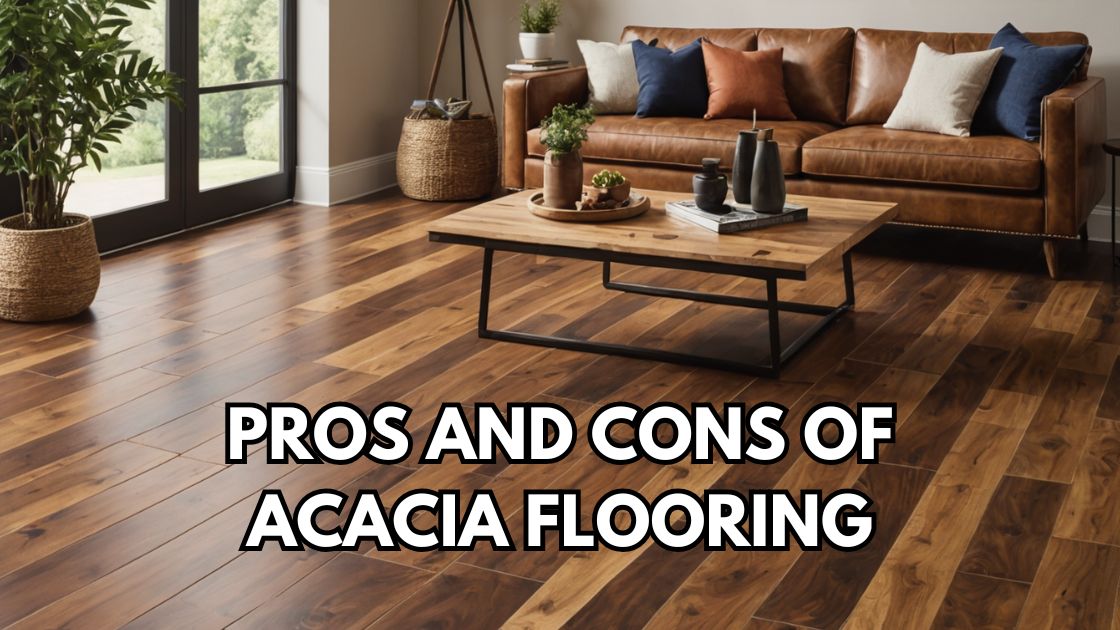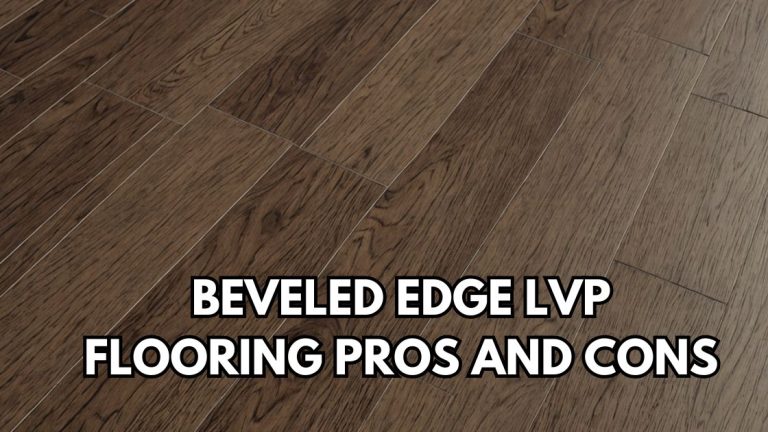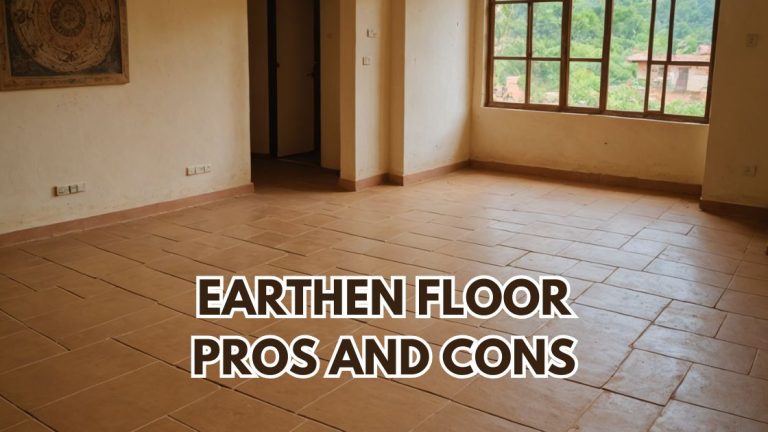Acacia Flooring Pros And Cons: A Comprehensive Guide
When it comes to choosing the perfect flooring for your home, there are a variety of options available, each with its own set of advantages and drawbacks. One increasingly popular choice is Acacia wood, known for its durability, unique appearance, and eco-friendly properties. However, like any flooring material, it comes with its own set of pros and cons. In this article, we will explore of Acacia flooring pros and cons, helping you decide whether it’s the right option for your space.
What is Acacia Wood?
Acacia wood comes from a variety of trees that belong to the Acacia genus, which is predominantly found in tropical and subtropical regions. This versatile hardwood is used for everything from furniture to flooring, prized for its strength and beautiful grain. Acacia trees are found in many parts of the world, including Australia, Africa, and Asia.
In terms of flooring, Acacia is most commonly harvested from Acacia koa and Acacia melanoxylon species, each offering distinct colors and grain patterns. Acacia flooring is available in both solid and engineered forms, with engineered planks being a popular choice for more cost-effective installations.
Acacia’s physical properties make it a compelling choice for flooring. The wood is typically a dense, medium-to-hard hardwood that can range in color from rich golden browns to deep reddish hues, with a distinct grain that can vary from straight to wavy or even curly.
Acacia Flooring Pros and Cons:
| Pros | Cons |
|---|---|
| Durability: Acacia is a strong, dense hardwood, resistant to scratches and dents. | Cost: Acacia flooring can be expensive compared to other hardwood options like oak or pine. |
| Unique Aesthetic: Acacia has a distinct grain pattern and rich color variations, adding character to any space. | Hardness: While durable, Acacia can be more challenging to work with during installation due to its density. |
| Eco-Friendly: Acacia trees are fast-growing and more sustainable than many other hardwood options. | Moisture Sensitivity: Acacia can swell or warp in highly humid or wet environments, requiring proper maintenance. |
| Low Maintenance: Acacia is naturally resistant to pests and requires minimal upkeep. | Finish Variability: The color and grain of Acacia can vary significantly between boards, which may not appeal to everyone. |
| Resistant to Fading: The natural oils in Acacia help the wood retain its rich color over time, even with exposure to sunlight. | Availability: Acacia wood may not be as readily available in certain regions, leading to higher shipping costs or longer lead times. |
| Versatile: Suitable for both traditional and modern home styles. | Not Always Eco-Certified: While Acacia is fast-growing, sourcing can sometimes involve non-sustainable practices, depending on the supplier. |
Read More:
Quartz Flooring Pros and Cons: A Comprehensive Guide
Pros and Cons of Wood Flooring: A Comprehensive Guide
Pros and Cons of Tile Flooring: A Comprehensive Guide
Pros of Acacia Flooring
1. Durability
One of the standout features of Acacia wood flooring is its exceptional durability. Acacia is known for being quite hard, making it resistant to dents, scratches, and other types of wear. Its hardness comes from its dense cellular structure, which allows it to withstand heavy foot traffic and furniture placement.
This level of durability makes Acacia flooring an excellent option for high-traffic areas such as living rooms, hallways, and kitchens. It is also less likely to suffer from damage caused by pet claws or dropped items, making it a great choice for homes with pets or young children.
2. Aesthetic Appeal
Acacia wood is often chosen for its striking aesthetic qualities. The natural colors of Acacia wood can range from light golden tones to dark brown hues, with vibrant reds and oranges in between. This variety gives homeowners the flexibility to choose a floor that complements their decor, whether they are going for a warm, rustic vibe or a more modern, exotic look.
In addition to color, Acacia has a unique grain pattern that sets it apart from other hardwoods. Its swirling, irregular grain can create a visually dynamic floor that adds personality and character to any room. No two pieces of Acacia wood are alike, so you can expect a one-of-a-kind floor.
3. Eco-Friendly
Acacia wood is considered a sustainable flooring material, which is increasingly important for environmentally-conscious consumers. Acacia trees grow quickly, reaching maturity in a relatively short period. This makes them an ideal renewable resource for hardwood flooring. Additionally, many Acacia trees are harvested from managed forests, ensuring that their production doesn’t contribute to deforestation.
Moreover, Acacia is often sourced from regions where other hardwoods may be scarce, providing a more sustainable alternative to hardwoods like oak, walnut, or maple.
4. Ease of Maintenance
Acacia wood flooring is relatively easy to maintain, which is a significant advantage for homeowners who want a beautiful floor with minimal upkeep. Regular sweeping or vacuuming to remove dirt and debris is typically all that’s needed to keep your Acacia floor looking great. For deeper cleaning, a damp mop or cloth will suffice.
If your Acacia floor is sealed with a protective coating, it is more resistant to staining and water damage, making it a low-maintenance flooring option. Periodically polishing the surface can also help preserve its sheen and keep the wood looking fresh.
5. Affordability
Compared to other hardwood options like oak, walnut, or cherry, Acacia is a more budget-friendly choice. Its relatively quick growth cycle makes it a cost-effective material to source and manufacture. This affordability allows homeowners to achieve the look and durability of hardwood flooring without breaking the bank.
While the price may vary depending on the quality and grade of the wood, Acacia is often one of the more affordable exotic hardwood options available.
Cons of Acacia Flooring
While Acacia offers numerous advantages, it also comes with a few drawbacks that homeowners should consider before making a final decision.
1. Hardness
The same hardness that makes Acacia wood so durable can also present challenges. Acacia is tough to cut and may require specialized tools during installation. Additionally, its density can make it difficult to sand down or repair if the floor becomes scratched or dented.
If you are looking for a softer wood that is easier to work with, Acacia may not be the best choice. For DIY enthusiasts, this can also translate into higher installation costs if professional help is needed.
2. Sensitivity to Temperature and Humidity
Acacia wood, like most hardwoods, can be sensitive to changes in temperature and humidity. Over time, fluctuations in moisture levels can cause the wood to expand and contract, potentially leading to warping or cupping. This is especially a concern in regions with extreme climate conditions or areas with significant humidity, such as bathrooms or basements.
Proper installation and acclimatization of the wood before installation are key to minimizing this issue. However, even with these precautions, it’s important to be mindful of moisture levels in your home.
3. Limited Availability
Acacia is not as widely available as some other hardwoods, such as oak or maple, which can make it more challenging to source. Certain grades or finishes of Acacia may be in limited supply depending on your region, potentially driving up the cost or lead time for your project.
Additionally, because Acacia is often imported from regions like Southeast Asia and Africa, you may face delays or higher shipping costs.
4. Prone to Fading and Scratching
Although Acacia is durable, its surface can still be prone to fading over time, particularly in areas with high levels of sunlight. The intense UV rays can alter the rich colors of the wood, causing it to lose some of its vibrancy.
Similarly, although Acacia is relatively scratch-resistant, the surface can still be susceptible to damage from heavy furniture, pet claws, or high-heeled shoes. Regular maintenance, including refinishing, can help mitigate this issue, but it is something to keep in mind.
5. Uneven Grain and Color Variation
While Acacia’s unique grain is part of its charm, it can also lead to uneven color and grain patterns. Some planks may have more pronounced variations than others, which may not suit every taste. If you’re after a more uniform appearance in your flooring, you may want to consider a more predictable wood type.
For those who love the eclectic, natural look, however, this feature is often seen as a bonus.
Comparing Acacia Flooring to Other Flooring Options
To better understand whether Acacia flooring is right for you, let’s compare it with other common hardwood flooring options.
Acacia vs. Oak
Oak is one of the most popular hardwoods used for flooring. While both Acacia and Oak are durable, Acacia tends to be harder and more resistant to scratches. However, Oak has a more traditional, uniform appearance, making it a better choice for those who prefer a classic look. Additionally, Oak is more widely available than Acacia, making it easier to source and install.
Acacia vs. Maple
Maple is another strong hardwood with a fine grain, but it is generally
softer than Acacia. While Acacia’s unique, bold patterns make it an excellent choice for statement rooms, Maple’s subtle grain makes it a more neutral option for versatile design. Maple floors also tend to be more prone to denting than Acacia, which could make Acacia a better choice for high-traffic areas.
Acacia vs. Bamboo
Bamboo is an eco-friendly alternative to hardwood, but Acacia is generally harder and more durable. Bamboo can be prone to scratching and denting over time, while Acacia offers better resistance to wear and tear. On the other hand, bamboo flooring typically has a more modern, sleek look compared to the rustic appeal of Acacia.
How to Maintain Acacia Flooring?
Maintaining Acacia flooring is relatively simple, but regular upkeep will ensure its longevity. Here’s how to care for it:
- Regular cleaning: Sweep or vacuum the floor frequently to remove dirt and debris. Use a soft cloth or mop to clean up spills immediately.
- Protective finishes: Consider applying a protective finish or sealant to preserve the color and texture of the wood.
- Scratch repairs: Minor scratches can be sanded out and refinished. For larger damage, it may be necessary to replace individual planks.
Is Acacia Flooring Right for You?
Acacia flooring is ideal for those looking for a durable, eco-friendly option that adds a unique, exotic touch to their space. It’s perfect for homes with high foot traffic and pets, as its hardness and resistance to scratches make it a practical choice.
However, if you’re seeking a soft, uniform look or have concerns about moisture levels, you may want to explore other options.
Conclusion
Acacia flooring is a beautiful and practical choice that can enhance any space with its striking color and grain. While it offers many advantages, including durability, sustainability, and ease of maintenance, there are some downsides, such as sensitivity to temperature changes and potential for fading. Ultimately, whether Acacia is the right choice for you will depend on your personal preferences and the specific needs of your home.








